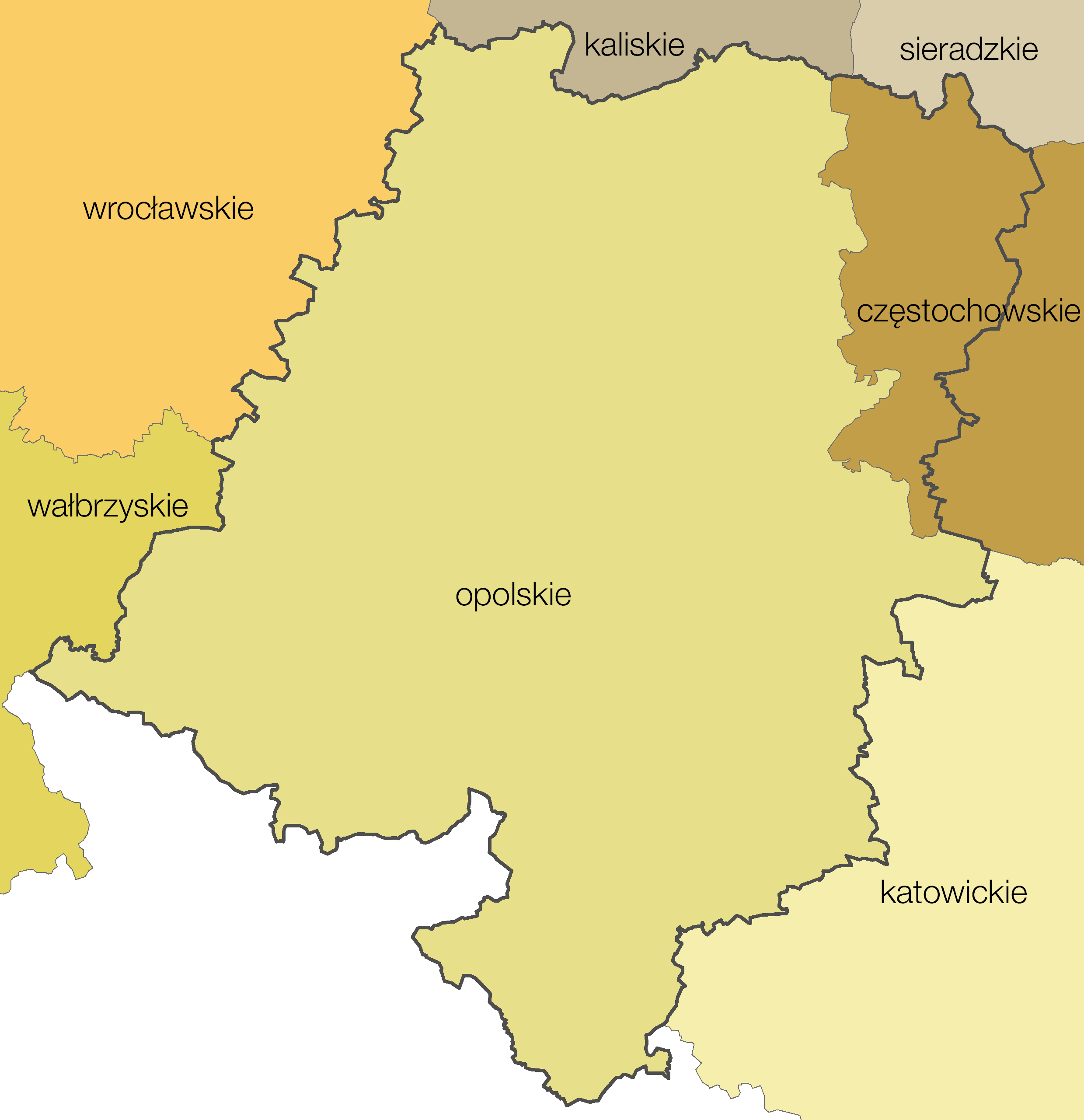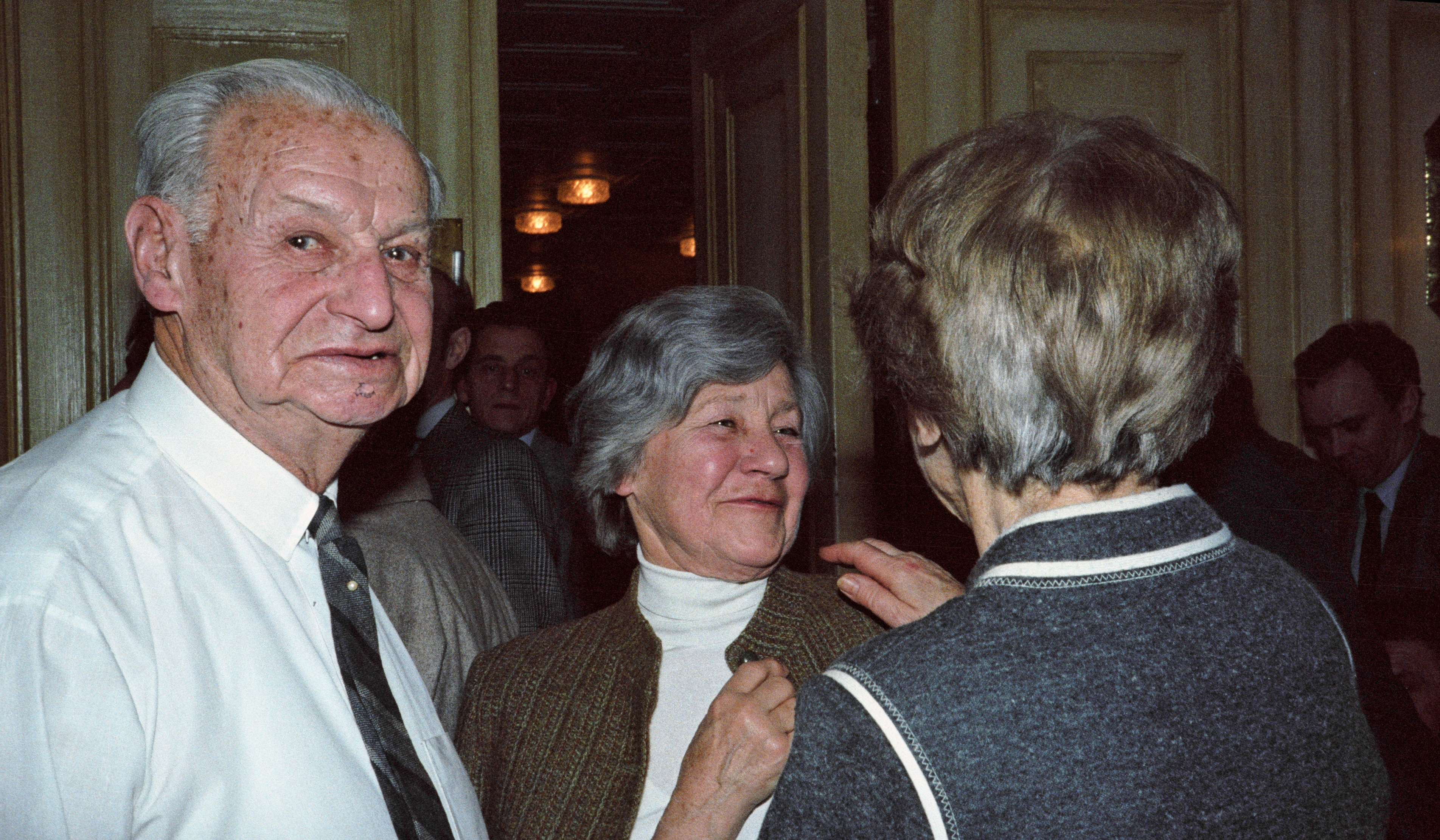|
Gorzów Śląski
Gorzów Śląski (german: Landsberg in Oberschlesien) is a town in Olesno County, Opole Voivodeship, Poland, with 2,452 inhabitants (2019). Notable people * Nathanael Pringsheim (1823–1894), Jewish German botanist *Herbert Weichmann Herbert Weichmann (23 February 1896 – 9 October 1983) was a German lawyer and politician ( Social Democratic Party) and First Mayor of Hamburg (1965–1971). In his position as mayor of Hamburg, he served as President of the Bundesrat (19 ... (1896–1983), Jewish German politician Twin towns – sister cities See twin towns of Gmina Gorzów Śląski. References External links Jewish Community in Gorzów Śląskion Virtual Shtetl Olesno County Cities in Silesia Cities and towns in Opole Voivodeship Shtetls {{Olesno-geo-stub ... [...More Info...] [...Related Items...] OR: [Wikipedia] [Google] [Baidu] |
Voivodeships Of Poland
A voivodeship (; pl, województwo ; plural: ) is the highest-level administrative division of Poland, corresponding to a province in many other countries. The term has been in use since the 14th century and is commonly translated into English as "province". The Polish local government reforms adopted in 1998, which went into effect on 1 January 1999, created sixteen new voivodeships. These replaced the 49 former voivodeships that had existed from 1 July 1975, and bear a greater resemblance (in territory, but not in name) to the voivodeships that existed between 1950 and 1975. Today's voivodeships are mostly named after historical and geographical regions, while those prior to 1998 generally took their names from the cities on which they were centered. The new units range in area from under (Opole Voivodeship) to over (Masovian Voivodeship), and in population from nearly one million (Opole Voivodeship) to over five million (Masovian Voivodeship). Administrative authority at th ... [...More Info...] [...Related Items...] OR: [Wikipedia] [Google] [Baidu] |
Opole Voivodeship
Opole Voivodeship, or Opole Province ( pl, województwo opolskie ), is the smallest and least populated voivodeship (province) of Poland. The province's name derives from that of the region's capital and largest city, Opole. It is part of Upper Silesia. A relatively large German minority, with representatives in the Sejm, lives in the voivodeship, and the German language is co-official in 28 communes. Opole Voivodeship is bordered by Lower Silesian Voivodeship to the west, Greater Poland and Łódź Voivodeships to the north, Silesian Voivodeship to the east, and the Czech Republic (Olomouc Region and Moravian-Silesian Region) to the south. Opole Province's geographic location, economic potential, and its population's level of education make it an attractive business partner for other Polish regions (especially Lower Silesian and Silesian Voivodeships) and for foreign investors. Formed in 1997, the Praděd/Pradziad Euroregion with its headquarter in Prudnik has facilitated e ... [...More Info...] [...Related Items...] OR: [Wikipedia] [Google] [Baidu] |
Powiat
A ''powiat'' (pronounced ; Polish plural: ''powiaty'') is the second-level unit of local government and administration in Poland, equivalent to a county, district or prefecture ( LAU-1, formerly NUTS-4) in other countries. The term "''powiat''" is most often translated into English as "county" or "district" (sometimes "poviat"). In historical contexts this may be confusing because the Polish term ''hrabstwo'' (an administrative unit administered/owned by a ''hrabia'' (count) is also literally translated as "county". A ''powiat'' is part of a larger unit, the voivodeship (Polish ''województwo'') or province. A ''powiat'' is usually subdivided into '' gmina''s (in English, often referred to as "communes" or "municipalities"). Major towns and cities, however, function as separate counties in their own right, without subdivision into ''gmina''s. They are termed " city counties" (''powiaty grodzkie'' or, more formally, ''miasta na prawach powiatu'') and have roughly the same ... [...More Info...] [...Related Items...] OR: [Wikipedia] [Google] [Baidu] |
Olesno County
__NOTOC__ Olesno County ( pl, powiat oleski) is a unit of territorial administration and local government (powiat) in Opole Voivodeship, south-western Poland. It came into being on January 1, 1999, as a result of the Polish local government reforms passed in 1998. Its administrative seat and largest town is Olesno, which lies north-east of the regional capital Opole. The county contains three other towns: Praszka, north of Olesno, Dobrodzień, south of Olesno, and Gorzów Śląski, north of Olesno. The county covers an area of . As of 2019 its total population is 64,411. The most populated towns are Olesno with 9,374 inhabitants and Praszka with 7,655 inhabitants. Neighbouring counties Olesno County is bordered by Wieruszów County and Wieluń County to the north, Kłobuck County to the east, Lubliniec County to the south-east, Strzelce County to the south, Opole County to the south-west, and Kluczbork County to the west. Administrative division The county is subdivided into ... [...More Info...] [...Related Items...] OR: [Wikipedia] [Google] [Baidu] |
Gmina
The gmina (Polish: , plural ''gminy'' , from German ''Gemeinde'' meaning ''commune'') is the principal unit of the administrative division of Poland, similar to a municipality. , there were 2,477 gminas throughout the country, encompassing over 43,000 villages. 940 gminas include cities and towns, with 302 among them constituting an independent urban gmina ( pl, gmina miejska) consisting solely of a standalone town or one of the 107 cities, the latter governed by a city mayor (''prezydent miasta''). The gmina has been the basic unit of territorial division in Poland since 1974, when it replaced the smaller gromada (cluster). Three or more gminas make up a higher level unit called powiat, except for those holding the status of a city with powiat rights. Each and every powiat has the seat in a city or town, in the latter case either an urban gmina or a part of an urban-rural one. Types There are three types of gmina: #302 urban gmina ( pl, gmina miejska) constituted either by a sta ... [...More Info...] [...Related Items...] OR: [Wikipedia] [Google] [Baidu] |
Gmina Gorzów Śląski
__NOTOC__ Gmina Gorzów Śląski is an urban-rural gmina (administrative district) in Olesno County, Opole Voivodeship, in south-western Poland. Its seat is the town of Gorzów Śląski, which lies approximately north of Olesno and north-east of the regional capital Opole. The gmina covers an area of , and as of 2019 its total population is 7,131. Villages Apart from the town of Gorzów Śląski, Gmina Gorzów Śląski contains the villages and settlements of Budzów, Dębina, Gola, Jamy, Jastrzygowice, Kobyla Góra, Kozłowice, Krzyżańcowice, Nowa Wieś Oleska, Pakoszów, Pawłowice Gorzowskie, Skrońsko, Uszyce and Zdziechowice. Neighbouring gminas Gmina Gorzów Śląski is bordered by the gminas of Byczyna, Kluczbork, Łubnice, Olesno, Praszka, Radłów and Skomlin. Twin towns – sister cities Gmina Gorzów Śląski is twinned with: * Fehérvárcsurgó Fehérvárcsurgó is a village in Fejér county, Hungary Hungary ( hu, Magyarország ) is a ... [...More Info...] [...Related Items...] OR: [Wikipedia] [Google] [Baidu] |
Poland
Poland, officially the Republic of Poland, is a country in Central Europe. It is divided into 16 administrative provinces called voivodeships, covering an area of . Poland has a population of over 38 million and is the fifth-most populous member state of the European Union. Warsaw is the nation's capital and largest metropolis. Other major cities include Kraków, Wrocław, Łódź, Poznań, Gdańsk, and Szczecin. Poland has a temperate transitional climate and its territory traverses the Central European Plain, extending from Baltic Sea in the north to Sudeten and Carpathian Mountains in the south. The longest Polish river is the Vistula, and Poland's highest point is Mount Rysy, situated in the Tatra mountain range of the Carpathians. The country is bordered by Lithuania and Russia to the northeast, Belarus and Ukraine to the east, Slovakia and the Czech Republic to the south, and Germany to the west. It also shares maritime boundaries with Denmark and Sweden. ... [...More Info...] [...Related Items...] OR: [Wikipedia] [Google] [Baidu] |
Nathanael Pringsheim
Nathanael Pringsheim (30 November 1823 – 6 October 1894) was a German botanist. Biography Nathanael Pringsheim was born at Landsberg, Prussian Silesia, and studied at the universities of Breslau, Leipzig, and Berlin successively. He graduated in 1848 as doctor of philosophy with the thesis ''De forma et incremento stratorum crassiorum in plantarum cellula'', and rapidly became a leader in the great botanical renaissance of the 19th century. His contributions to scientific phycology were of striking interest. Pringsheim was among the first to demonstrate the occurrence of a sexual process in this class of plants, and he drew from his observations weighty conclusions as to the nature of sexuality. Together with the French investigators Gustave Adolphe Thuret (1817–1875) and Jean-Baptiste Édouard Bornet (1828–1911), Pringsheim ranks as the founder of our scientific knowledge of the algae. Among his researches in this field may be mentioned those on ''Vaucheria'' (1855) ... [...More Info...] [...Related Items...] OR: [Wikipedia] [Google] [Baidu] |
Herbert Weichmann
Herbert Weichmann (23 February 1896 – 9 October 1983) was a German lawyer and politician (Social Democratic Party) and First Mayor of Hamburg (1965–1971). In his position as mayor of Hamburg, he served as President of the Bundesrat (1968–1969). Life Weichmann was born in Landsberg, Upper Silesia, then part of the German Reich (now Gorzów Śląski, Poland), to a Jewish family of physicians. In 1914 he began to study medicine, but volunteered at the outbreak of the First World War in 1914. After the war Weichmann studied law at the Silesian Friedrich Wilhelm University, Breslau, and graduated (Dr. iur.) in 1922. In 1928 he married Elsbeth Greisinger and was appointed as liaison officer to Prime Minister of Prussia Otto Braun. After the takeover of power (1933) by the Nazi Party Weichmann fled first to Czechoslovakia, then to France—with a short term of imprisonment (1939–1940)—Spain, Portugal and later the United States. In 1948 he returned to Germany ... [...More Info...] [...Related Items...] OR: [Wikipedia] [Google] [Baidu] |
Cities In Silesia
A city is a human settlement of notable size.Goodall, B. (1987) ''The Penguin Dictionary of Human Geography''. London: Penguin.Kuper, A. and Kuper, J., eds (1996) ''The Social Science Encyclopedia''. 2nd edition. London: Routledge. It can be defined as a permanent and densely settled place with administratively defined boundaries whose members work primarily on non-agricultural tasks. Cities generally have extensive systems for housing, transportation, sanitation, utilities, land use, production of goods, and communication. Their density facilitates interaction between people, government organisations and businesses, sometimes benefiting different parties in the process, such as improving efficiency of goods and service distribution. Historically, city-dwellers have been a small proportion of humanity overall, but following two centuries of unprecedented and rapid urbanization, more than half of the world population now lives in cities, which has had profound consequences for g ... [...More Info...] [...Related Items...] OR: [Wikipedia] [Google] [Baidu] |
Cities And Towns In Opole Voivodeship
A city is a human settlement of notable size.Goodall, B. (1987) ''The Penguin Dictionary of Human Geography''. London: Penguin.Kuper, A. and Kuper, J., eds (1996) ''The Social Science Encyclopedia''. 2nd edition. London: Routledge. It can be defined as a permanent and Urban density, densely settled place with administratively defined boundaries whose members work primarily on non-agricultural tasks. Cities generally have extensive systems for housing, transportation, sanitation, Public utilities, utilities, land use, Manufacturing, production of goods, and communication. Their density facilitates interaction between people, government organisations and businesses, sometimes benefiting different parties in the process, such as improving efficiency of goods and service distribution. Historically, city-dwellers have been a small proportion of humanity overall, but following two centuries of unprecedented and rapid urbanization, more than half of the world population now lives in cit ... [...More Info...] [...Related Items...] OR: [Wikipedia] [Google] [Baidu] |




